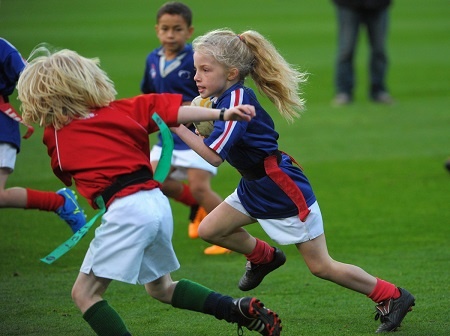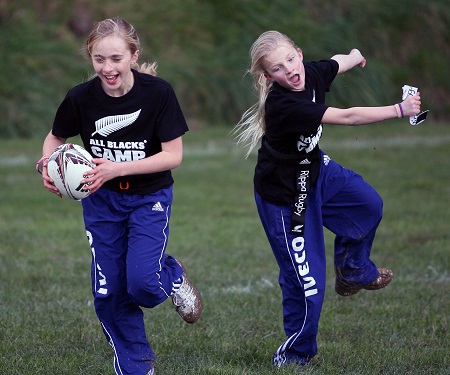- Rugby Toolbox
- Resources & Education
- Learn more
- Articles
- Snook on Coaching
- Tap Pass and Swerve U7
- Ruck & Run Drill
- Playing Philosophy – Ruck & Run Coaching Components
- Playing Philosophy – Spread the Forwards
- Playing Philosophy – A forward behind the ruck
- Playing Philosophy – Ruck & Run
- Playing Philosophy – An idea!
- The Breakdown
- Building Positivity [3]
- Building Positivity [2]
- Building Positivity
- Fitness and Game Related Activities
- Getting the Head Working
- Missiles are Dangerous
- Use of Video
- Winger Attacking Outside First-Five
- Player Profiling
- Selection
- Fitness Away from the Team Session
- Playing Philosophy (Pre season Prep)
- Coaching the Coaches
- The Rugby Coordinator and Pre-Season Preparation
- Why Not Use Tap Penalties More Often?
- Why Kick the Ball Down the Middle of the Field?
- Defending the 5 Metre Lineout Drive
- Scoring from the 5 Metre Lineout
- What are the Kicking Team Aiming to Achieve from Halfway Restart
- Should We Practice Scoring Tries?
- Team Culture
- Looking After Your Players
- Coach Survival Tips
- Under 11/13 – Backline Defence
- Under 11/13 – Ruck Defence
- Under 11/13 – Back Attack
- Under 13 – The Counter Attack
- Under 11/13 – The Maul
- Under 11/13 – Lineouts
- Under 11/13 – Decision Making
- Under 11/13 – Support Play
- Under 11/13 – Dive Pass and More
- Under 11/13 – Drop & Grubber Kick /Highball Catch
- Under 11/13 – Front on Tackling
- Under 11/13 – Contact – Getting Up – The Ruck
- Under 11/13 – The Coaching Session
- Under 8/10 – Using Space
- Under 8/10 – Kicking
- Under 8/10 – Contact and Picking Up the Ball
- U8/U10 Draw & Pass and Sidestep
- Under 8/10 – The Tackle
- Under 8/10 – The Coaching Session
- Under 7 – Test Your Coaching – Support Play
- Tap Pass and Swerve U7
- Ball Familiarisation; Passing & Receiving
- Activities for the Non-Contact Tackle
- Under 7 – The Coaching Session
- Coaching Teenagers – After the Ruck
- Coaching Teenagers – The Practice Session
- Coaching Teenagers – Best Practice
- Coaching Kids – Best Practice
- Plays from a Tap Penalty
- Running Plays from a 5 Man Lineout
- Driving Plays from a 5 Man Lineout
- Strike Plays at the End of the Lineout
- Back Strike Plays at the Lineout
- Wide Strike at the Scrum (2)
- Wide Strike at the Scrum
- Midfield Attack at the Scrum
- No 8 Plays at the Scrum (2)
- No 8 Plays at the Scrum
- The Cut Out Pass
- Skills to Penetrate (2)
- Skills to Penetrate
- Movements to Penetrate
- Patterns to Penetrate
- Contact and Continuity
- Keeping the Ball Alive Out Wide
- Pre Season Support Activities
- Checklist
- Understanding the game
- The Playing Philosophy
- The Lineout
- Overview
- Team Profile
- Start Now!
- Backrow
- Nine and Ten
- Rugby-related Fitness Activities
- The Psychological Edge
- Open Field Play
- Key Performance Indicators
- Improving Team Performance
- Backline Attack Concepts
- Tactics at Phase Play
- Playing Philosophy
- The ‘Stop Focus’
- Kick Attack
- Clearing the 22
- Wide Attack at Phase
- Player Focus
- Scrum Preparation
- Lineout Preparation
- Back Attack Preparation
- Sevens Preparation
- Sevens Kick Offs
- Sevens Scrum and Lineout
- Sevens Attack Patterns
- Sevens Defence
- 7's Selection and Game Planning
- Coaching and Leadership
- How the Game Evolves
- Changing Within the Game
- Learning from the Television.
- Using Tap Penalties Wisely
- Defence Drills
- Defence Drills for Tight Five
- Team Defence and TUB’ing
- Establishing Patterns from the Ruck
- Structured Phase Play
- Structuring Phase Play on the Run
- Coaching Roles
- Structuring a Close in Tackling/Defensive Session
- Coaching in Threes
- Attacking Back Play
- Kick Off Chase
- Wrap Around Back Plays
- Lineout Plans
- Looking and Learning
- Motivating Your Players
- Scrum Attack
- Refocusing the Team
- Monitoring the Progress
- Learning the Game
- Playing to the Laws
- Small is OK
- Decisions After the Tackle
- Improving Your Coaching
- Food for Thought
- More Food for Thought
- Passing & Catching
- How Ireland Nearly Beat the All Blacks
- The Progressive Coach
- Try Something New
- Encouraging Excitement
- The Mental Approach
- Where to Start
- Being the Best You Can Be
- Off the Ball Decisions
- Lineouts Difficult to Master
- Decisions on the Run
- Rucking and Rolling
- A Successful Approach
- Gaining Clarity
- Manipulation vs Physicality
- Beating the Drift
- To Ruck or Not to Ruck
- Stopping the Lineout Drive
- Fine Tuning the Planning
- It's a Running Game
- RugbySmart 2015
- Using the Shoulders
- Loosehead Prop / Tighthead Prop
- Position Specific – Hooker
- Position Specific – Lock
- Position Specific – Blindside Flanker
- Position Specific – Openside Flanker
- Position Specific – No 8
- Position Specific – Halfback
- Position Specific – First Five Eighth
- Position Specific – Second Five Eighth
- Position Specific – Centre Three-quarter
- Position Specific – Wing
- Position Specific – Fullback
Tap Pass and Swerve U7

Activities for Tap & Pass / Swerve
TAP & PASS
The tap kick followed by a pass is used to restart the game at kick offs and penalties. At this age the ball should be placed on the ground and moved slightly forward using the side of the foot. The player should then pick the ball up in two hands and make an accurate pass.
Techniques
When picking the ball up to make the pass:
- place the furthest foot to the far point of the ball
- make sure the knees are bent and reach down with two hands over that foot
- pick the ball in two hands and step towards the receiver as the pass is made
- follow through with the arms as the ball is released and point towards the receiver.
Activities
- Have as many balls as possible grouped together with one player acting as the restart man
- Place several of the team mates in a circle around the balls about 3m from the passer
- Call a player’s name and the passer has to tap and make an accurate pass to that player
- Continue with this until the balls are exhausted and change to another player in the middle
- Have two groups going if sufficient players
- Speed it up and make longer passes as the players become more competent
- Coach technique on the ‘go’.
- Place several balls in a 20 metre grid and pair up the players
- Have a little competition
- On ‘go’ each pair has to run to a ball, make a tap and a pass; place the ball down and move on to another ball. The pair who make the most successful passes and catches (count only those which are caught) are the winners.
THE SWERVE
The swerve is an extension of running with the ball. When coaching this don’t worry too much if the player does a side-step or a goose-step or anything at all that evades a tackler just so long as they demonstrate a change of angle and/or pace and try to beat a defender and not just run straight,
Techniques
- Carry the ball in two hands
- Run directly towards the defender (not away from him)
- When a few metres from the defender who is hopefully standing square because the attacker is running straight at him, change direction and accelerate away
- Change direction by stepping across the outside leg with the inside leg. Swivel the hip around with the inside leg and accelerate. (This is the conventional method which can be tried out. Just make sure that the player changes direction and pace.)
- Keep the ball in two hands ready for a pass. (When they are older they can shift the ball to the far arm and get ready for the fend with the close arm)
Activities
- Jog through the technical detail in a 1 v 1 situation in a 10 x 10 grid. Speed it up as they understand what is required.
- In a 10 x 10 grid divide the team so that there are even numbers of attackers and defenders at each end. Start in the middle so that there is 5m on each side of the defender. Run straight and then swerve either direction to beat the defender. Have the rippa belts on so that the winner is clear. Coach on the ‘go’.
- Have a similar activity with the start being a tap and pass from the corner of the attacking side.
- Have a 40m long grid and 10 m wide with four defenders placed at even spaces down the grid. The attacker has to straighten and run directly at each defender before changing direction and accelerating. This will be a real test with lots of changes of pace and direction.